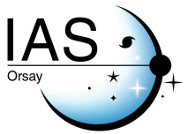solarFLAG hare and hounds: estimation of p-mode frequencies from Sun-as-star helioseismology data
| Titre | solarFLAG hare and hounds: estimation of p-mode frequencies from Sun-as-star helioseismology data |
| Type de publication | Journal Article |
| Year of Publication | 2008 |
| Auteurs | Jimenez-Reyes, SJ, Chaplin, WJ, Garcia, RA, Appourchaux, T, Baudin, F, Boumier, P, Elsworth, Y, Fletcher, ST, Lazrek, M, Leibacher, JW, Lochard, J, New, R, Regulo, C, Salabert, D, Toutain, T, Verner, GA, Wachter, R |
| Journal | Monthly Notices of the Royal Astronomical Society |
| Volume | 389 |
| Pagination | 1780-1790 |
| Date Published | Oct |
| ISBN Number | 0035-8711 |
| Numéro d'accès | WOS:000259271600026 |
| Résumé | We report on the results of the latest solarFLAG hare-and-hounds exercise, which was concerned with testing methods for extraction of frequencies of low-degree solar p modes from data collected by Sun-as-a-star observations. We have used the new solarFLAG simulator, which includes the effects of correlated mode excitation and correlations with background noise, to make artificial time-series data that mimic Doppler velocity observations of the Sun-as-a-star. The correlations give rise to asymmetry of mode peaks in the frequency power spectrum. 10 members of the group (the hounds) applied their 'peak-bagging' codes to a 3456-d data set, and the estimated mode frequencies were returned to the hare (who was WJC) for comparison. Analysis of the results reveals a systematic bias in the estimated frequencies of modes above approximate to 1.8 mHz. The bias is negative, meaning the estimated frequencies systematically underestimate the input frequencies. We identify two sources that are the dominant contributions to the frequency bias. Both sources involve failure to model accurately subtle aspects of the observed power spectral density in the part (window) of the frequency power spectrum that is being fitted. One source of bias arises from a failure to account for the power spectral density coming from all those modes whose frequencies lie outside the fitting windows. The other source arises from a failure to account for the power spectral density of the weak l = 4 and 5 modes, which are often ignored in Sun-as-a-star analysis. The Sun-as-a-star peak-bagging codes need to allow for both sources, otherwise the frequencies are likely to be biased. |



